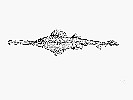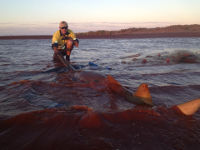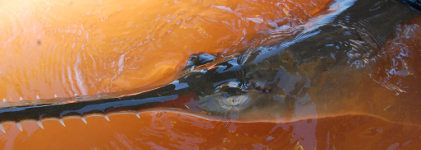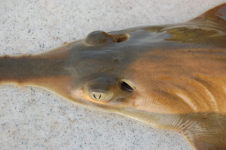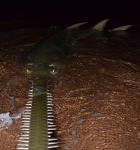Pristis zijsron
Bleeker, 1851
Longcomb sawfish
Classification: Elasmobranchii Rhinopristiformes Pristidae
Reference of the original description
Vijfde bijdrage tot de kennis der ichthyologische fauna van Borneo, met beschrijving van eenige nieuwe soorten van zoetwatervisschen. Natuurkundig Tijdschrift voor Nederlandsch Indië, 2, 415–442
Vijfde bijdrage tot de kennis der ichthyologische fauna van Borneo, met beschrijving van eenige nieuwe soorten van zoetwatervisschen. Natuurkundig Tijdschrift voor Nederlandsch Indië, 2, 415–442
Synonyms / new combinations and misspellings
Pristis dubius, Pristis zisron, Pristis zyrson, Pristis zysron, Pristis zysross
Pristis dubius, Pristis zisron, Pristis zyrson, Pristis zysron, Pristis zysross
Description :
Citation: Pristis zijsron Bleeker, 1851: In: Database of modern sharks, rays and chimaeras, www.shark-references.com, World Wide Web electronic publication, Version 05/2025
Please send your images of "Pristis zijsron" to info@shark-references.com
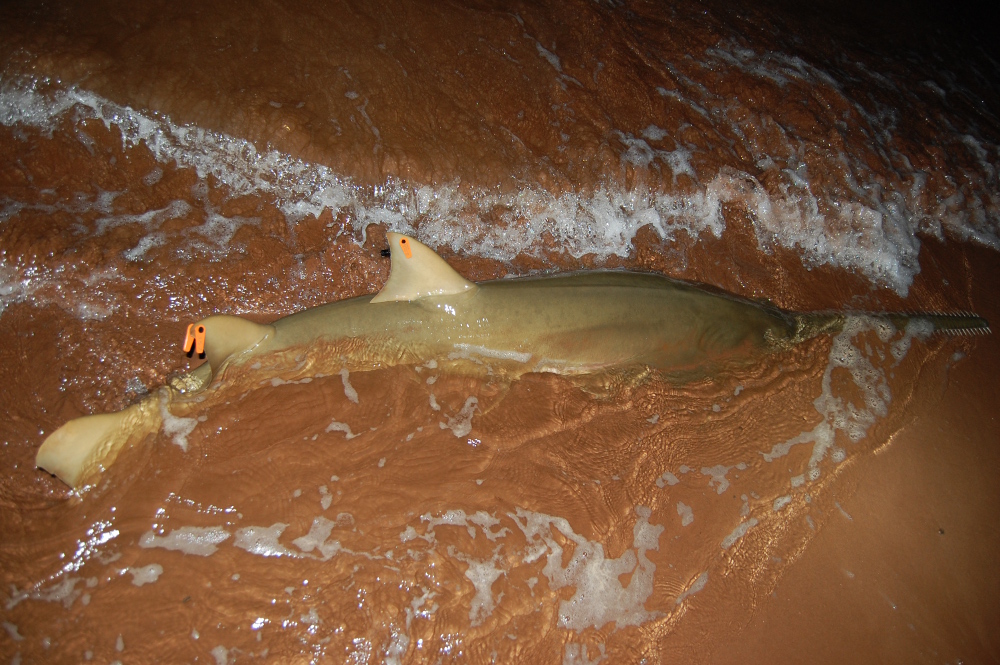
Pristis zijsron Bleeker, 1851, © David Morgan, Freshwater Fish Group & Fish Health Unit, Murdoch University, Australia

Pristis zijsron Bleeker, 1851, © David Morgan, Freshwater Fish Group & Fish Health Unit, Murdoch University, Australia
Common names
 Requin scie,
Requin scie,  Dindagubba,
Dindagubba,  Green saw fish,
Green saw fish,  Green sawfish,
Green sawfish,  Longcomb sawfish,
Longcomb sawfish,  Longsnout sawfish,
Longsnout sawfish,  Narrowsnout sawfish,
Narrowsnout sawfish,  Sawfish,
Sawfish,  Tubarão-serra africano
Tubarão-serra africano
 Requin scie,
Requin scie,  Dindagubba,
Dindagubba,  Green saw fish,
Green saw fish,  Green sawfish,
Green sawfish,  Longcomb sawfish,
Longcomb sawfish,  Longsnout sawfish,
Longsnout sawfish,  Narrowsnout sawfish,
Narrowsnout sawfish,  Sawfish,
Sawfish,  Tubarão-serra africano
Tubarão-serra africano
Short Description
A large sawfish (adult at over 400 cm); rostral saw with 23 to 34 pairs of teeth. Posteriormost tooth on rostral saw just anterior to base of saw. Rostrum with sides nearly parallel posteriorly; rostrum slender, width at posteriormost tooth 7 to 10 in length to base. Rostral teeth moderately flattened, elongated, and peg or awl-like, with double edges and a groove on the posterior margin in adults but smooth and without a barb in young. Interspace between posteriormost 2 rostral teeth 2 to 7 times space between first 2 rostral teeth. No incurrent grooves on underside of snout between edges of head and nostril incurrent apertures. Nostrils short, broad and transverse, anterior nasal flaps large and broad. Pectoral fins broad-based, low and long. First dorsal fin with origin somewhat posterior to pelvic-fin origins but ahead of pelvic-fin insertions. No secondary caudal keel below the main one on the caudal-fin base. Caudal fin without a subterminal notch and with no ventral lobe. Colour: greenish brown or olive above, white below. [541].
A large sawfish (adult at over 400 cm); rostral saw with 23 to 34 pairs of teeth. Posteriormost tooth on rostral saw just anterior to base of saw. Rostrum with sides nearly parallel posteriorly; rostrum slender, width at posteriormost tooth 7 to 10 in length to base. Rostral teeth moderately flattened, elongated, and peg or awl-like, with double edges and a groove on the posterior margin in adults but smooth and without a barb in young. Interspace between posteriormost 2 rostral teeth 2 to 7 times space between first 2 rostral teeth. No incurrent grooves on underside of snout between edges of head and nostril incurrent apertures. Nostrils short, broad and transverse, anterior nasal flaps large and broad. Pectoral fins broad-based, low and long. First dorsal fin with origin somewhat posterior to pelvic-fin origins but ahead of pelvic-fin insertions. No secondary caudal keel below the main one on the caudal-fin base. Caudal fin without a subterminal notch and with no ventral lobe. Colour: greenish brown or olive above, white below. [541].
Distribution
Indo-West Pacific: Red Sea and East Africa to Papua New Guinea, north to southern China, south to New South Wales, Australia. Source: www.gbif.org
Indo-West Pacific: Red Sea and East Africa to Papua New Guinea, north to southern China, south to New South Wales, Australia. Source: www.gbif.org
Human uses
fisheries: commercial; gamefish: yes
fisheries: commercial; gamefish: yes
Size / Weight / Age
TL (max): 730 cm TL; TL (mature): unclear, possibly near 430 cm; TL (born): ~80 cm [24867]
TL (max): 730 cm TL; TL (mature): unclear, possibly near 430 cm; TL (born): ~80 cm [24867]
Remarks
shark-references Species-ID=5088; CITES: (see: Protected Species for more details) Convention on International Trade in Endangered Speciesof Wild Fauna and Flora annex: I; Council Regulation 2017/160 annex: A
shark-references Species-ID=5088; CITES: (see: Protected Species for more details) Convention on International Trade in Endangered Speciesof Wild Fauna and Flora annex: I; Council Regulation 2017/160 annex: A
Parasites (arranged by Jürgen Pollerspöck)
Monogenea
Cestoda
Copepoda
Hirudinea
Monogenea
Cestoda
- Floriparicapitus sp. [21566]
- Fossobothrium perplexum Beveridge & Campbell, 2005 [7395]
- Mixobothrium queenslandense Coleman & Beveridge & Campbell, 2019 [27352]
- Pristiorhynchus palmi Schaeffner & Beveridge, 2013 [17827]
- Pterobothrium acanthotruncatum Escalante & Carvajal, 1984 [16283] [16112] [21718]
- Pterobothrium australiense Campbell & Beveridge, 1996 [16283] [16112] [21718]
- Pterobothrium pearsoni (Southwell, 1929) [15789]
Copepoda
- Caligus furcisetifer Redkar, Rangnekar & Murti, 1949 [33009]
Hirudinea
- Branchellion plicobranchus Raj, 1953 [33009]
- Pontobdella macrothela (Schimarda, 1861) [28595] [33009]








